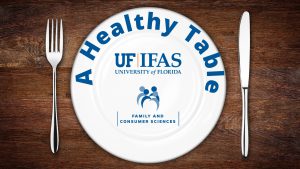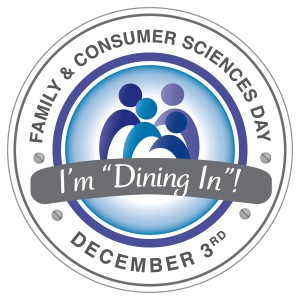
by Samantha Kennedy | Jul 9, 2021
I have just wrapped up my three-day Kitchen Creations camp and am happy to report that it was a big hit with the campers. Each day had a different country theme. Day 1 was Italian, Day 2 was Mexican, and Day 3 was American. All the dishes the kids made, including dessert, represented that day’s country.
The recipes ranged from simple to more complex, allowing the kids to build on basic skills to learn more advanced ones. For some campers, boiling a pot of water was a daunting task. For others, they learned how to caramelize and julienne. The campers worked in teams to create two main dishes, a salad, and a dessert each day, which was shared with the entire group.
I am pleased to announce there were no leftovers. The kids either ate it all, or wanted to take their culinary creations home to share with their families. If that is not a testimony to the camp’s success, I do not know what is.
I also was impressed with the campers’ willingness to try new things. Many of them were skeptical about the vegetable lasagna we made on Day 1, but nearly all the kids were willing to at least give it a try. And just like the baked ziti, Caesar salad, and chocolate biscotti we made that day, there was nothing left at the end of the day.
Kitchen skills are essential for healthy living, and teaching kids how to cook when they are young provides a strong foundation upon which to continue to build.

Kids can be eager helpers in the kitchen, even when it comes to cleaning up. Photo source: Samantha Kennedy, UF/IFAS Extension
Kids are eager learners in the kitchen. All the campers in Kitchen Creations were enthusiastic and ready to learn. They were proud of their creations, wanted to learn new skills, and were excited to use new tools and practice using familiar ones.
It is understandable that some parents may be reluctant to have younger kids in the kitchen. Maybe they are wary of possible injury. Maybe they are just so busy they do not have time to teach and supervise their children in the kitchen. It is a hectic world out there! But I know from personal experience with Kitchen Creations camp that kids, especially those interested in cooking, are more trustworthy and less accident-prone in the kitchen than some might expect.
The campers in my cooking camp are between the ages of 10 and 12 and in the four summers I have offered it, I have had only a few minor mishaps. The campers are aware of possible dangers in the kitchen. Things are hot. Things are sharp. Things are heavy. They are very conscientious about safety and handling things the correct way.
Kids who cook grow into adults who cook. Cooking is an important life skill that will be useful through someone’s entire life. Whether it is a student putting together quick, healthy meals and snacks to help them study, a busy parent trying to balance the responsibilities of everyday life while planning and making nutritious meals for their family, or a doting grandparent making something special for their grandkids, cooking is vital and brings people together.
Cooking is life.
I encourage you to support the budding chefs in your life. Instead of turning them away, allow them to help. Taking the time to prepare a meal together and then sharing that meal with loved ones builds stronger relationships while teaching important skills for a successful life.
UF/IFAS is an Equal Opportunity Institution.
by Kendra Hughson | Feb 1, 2021
In the midst of the COVID-19 pandemic, many of us have turned to cooking more meals at home. Cooking meals and eating at home has many benefits. When preparing meals, you can select the ingredients and choose healthy recipes lower in saturated fats, sodium, and sugar. When eating out, we tend to eat more food. You can more easily control your portion sizes when eating at home. Remember to include a variety of fruits and vegetables in your main dishes and side dishes. Finally, preparing and eating meals together is not only a fun way to teach healthy eating habits and cooking skills, but it is also a great way to connect with each other at the end of the day.
healthy recipes lower in saturated fats, sodium, and sugar. When eating out, we tend to eat more food. You can more easily control your portion sizes when eating at home. Remember to include a variety of fruits and vegetables in your main dishes and side dishes. Finally, preparing and eating meals together is not only a fun way to teach healthy eating habits and cooking skills, but it is also a great way to connect with each other at the end of the day.
We invite you to join us for A Healthy Table: Virtual Cooking School. In our virtual cooking school, you will learn how to prepare healthy meals for your family through self-paced online lessons and hands-on cooking activities. You will have opportunities to engage in monthly live virtual cooking demonstrations and interactive learning experiences.
Register before February 9th and save 20% off the ticket price. Early registrants gain access to a bonus class and kick-off event. Tickets are on sale for $19.99 until February 9th and $25 thereafter. Registration will close on February 23. Once registered, you will receive the Zoom class link and the link to the class website. Register here: http://bit.ly/ahealthytable.
The monthly Zoom class events will be held from 6:30-7:30 pm CT/ 7:30-8:30 pm ET on:
- Tuesday, February 9th: Kickoff Event Available for Early Birds only Program introduction and a sweet, healthy treat demonstration.
- Tuesday, February 23rd: Lesson 1, Kitchen skills primer
- Tuesday, March 23rd: Lesson 2, Cooking techniques – baking, grilling, roasting
- Tuesday, April 27th: Lesson3, Simple dishes – eggs, breads, salads, pasta
- Tuesday, May 25th: Lesson4, One dish meals – one-pot, slow cooker, packet meals
- Tuesday, June 22nd: Lesson 5, Entertaining and special occasions – setting a table, appetizers
Come cook with us and set your table for better health.
References:
Benefits of Cooking at Home
Cooking at Home for Healthier Eating
Benefits of Family Meals

by Melanie Taylor | Nov 24, 2020
2020 has been a year of many changes and challenges due to the Coronavirus pandemic, which unfortunately will continue into our holiday season. To protect our friends, family and community members we must continue following the science-based guidelines provided by the Centers for Disease Control and Prevention (CDC) and your state and local guidelines to prevent exposure and the spread of the virus.
Unfortunately, the Covid-19 epidemic numbers are rising again. Gatherings of any kind, both small and large, are contributing to the rise in positive cases. We can all make choices based on the scientific research that can protect us and others by making small changes in our 2020 holiday celebrations. Limiting the risk and being diligent in our actions should be our main goal until a vaccine is approved and dispersed throughout the country.

Holiday Dinner
Photo Source: UF/IFAS
Some unique and easy ways to celebrate the holidays this year are to “gather virtually” with those not in your immediate household or to gather in-person only with members of your own household. These two types of gatherings offer the lowest risk for spreading the virus. Your household is anyone who currently lives and shares common spaces in your home. People who do not currently live in your home, such as college students who are returning home from school for the holidays, should be considered part of different households. In-person gatherings that bring together family members or friends from different households, including those college students returning home, offer varying levels of risk. The level of risk is difficult to determine because people may have been exposed and/or are a carrier and may not be aware of it.
Here are some specific things to consider when deciding how to celebrate your holidays.
- Number of cases in your community – Be sure to know the number of positive Covid cases in your community. If the numbers are rising or are already high you should take precautions based on the data. You can check your specific county or city Covid rates at your local health departments website.
- Exposure during travel – Airports, bus stations, train stations, public transport, gas stations, rest stops and hotels are all places travelers can be exposed to the virus in the air and on surfaces. Be aware if you will be traveling or if you have guests traveling to your home.
- Location of your gathering – Indoor gatherings, especially those with poor ventilation, expose your family to more risk than outdoor gatherings.
- How long will your gathering last? – Time is an important factor to consider. The longer the gathering lasts the more risk those attendees will have of being exposed. Being within 6 feet of someone who has Covid for a cumulative total of 15 minutes or more greatly increases the risk of becoming sick and requires a 14-day quarantine.
- Number and crowding of people at the gathering – Gatherings with more people bring more risk than gatherings with fewer people. The size of a holiday gathering should be determined based on the ability of attendees from different households to stay 6 feet (2 arm lengths) apart, wear masks, wash hands and follow state, local, territorial, or tribal health and safety laws, rules and regulations.
- Behaviors of attendees before the gathering – People who do not consistently follow social distancing, wearing masks, regular handwashing and other prevention behaviors cause more risk than those who consistently practice the recommended safety measures.
- Behaviors of attendees during the gathering – Gatherings with more safety measures in place, such as mask wearing, social distancing and handwashing, offer less risk than gatherings where fewer or no preventive measures are being implemented. Use of alcohol or drugs may alter judgment and may make it more difficult to practice Covid safety measures.

Be sure your technology is charged and ready for your virtual holiday visit. Photo Source: Kendra Zamojski
Other high-risk holiday related activities to avoid to help prevent the spread of the virus:
- Going shopping in crowded stores.
- Participating or being a spectator at a crowded parade, race or other holiday celebration.
- Attending large indoor gatherings with people from outside of your household.
- Using alcohol or drugs that may alter judgment and make it more difficult to practice Covid safety measures.
Things to consider before your gatherings:
To make the holiday less stressful be sure to practice a virtual session before the virtual holiday gathering. Make sure everyone involved knows how to connect to the virtual holiday celebration so the gathering will go more smoothly and hopefully experience less technical problems on that day.
We all had to adapt to many unexpected changes this year and the holidays will be no different. Just remember being diligent now will protect family and friends and help control the spread of the virus in our communities. Be sure to enjoy your unique holiday season this year, but here’s hoping for a less challenging 2021.
Stay safe! Enjoy your family and friends from a safe distance! Happy Holidays!
Source:
CDC: https://www.cdc.gov/coronavirus/2019-ncov/daily-life-coping/holidays.html

by Angela Hinkle | Nov 23, 2020
Dining out with family was the thing to do when we were so busy doing so much outside the home. Now that we’re spending more time at home together, dining in is in again. You can start or continue the “in” thing by taking the pledge to dine-in healthy with your family this December 3rd. Why take this kind of pledge? Keep reading.

FCS Dine In Day
Making and keeping a promise has an upside
Keeping the commitment you made to eat healthy with your family means you get to reap the rewards of actually providing a healthy meal for your family. Additionally, keeping this promise can boost your self-confidence and self-esteem because you know you’re making strides to take care of yourself and your family.
Become popular
Since dining in is in again, eating healthy with your family December 3rd makes you the admired one to your family and friends. As you dine in together, share praises and compliments as well as healthy foods, and reinforce the feeling of belonging. After providing these trendy experiences often enough, you can begin to enjoy the adoration and respect of others around you. You can be popular.
It’s cherished time
Schedule it. Block off time for it. Show up for it. You and your family are worth it. Start with the pledge on December 3rd. For best success for a healthy lifestyle change, make it a S.M.A.R.T. goal. That’s one that is Specific, Measurable, Attainable, Relevant, and Time-framed. Here’s an example: Every Tuesday at 6pm, our family will eat a healthy meal together that includes at least two vegetables and a whole grain.
You can keep it safe
- If ventilation indoors is a bit stifling, eat outdoors when you can. Backyards, patios, and porches are great venues for your dining experiences.
- Clean your hands often as you prepare and eat your meal. If you can’t wash for 20 seconds with soap and running water, hand sanitizer is a good backup. Make sure your hands are completely dry after washing or sanitizing.
- Cook foods to the proper temperature. See the Safe Internal Temperature Chart.
- Put leftovers away as quickly as possible.
Tried and true or something new
- Have fun. Try decorating to make your mealtime together special. Let all family members participate.
- Make comfort food. But also try making something you’ve never had before, or try food prepared in a new way.
- Look through the cabinets or in the garage for kitchen equipment you haven’t used in a long time or have forgotten you had. Then use it.
For better health and wellness, make the pledge to Dine In with your family this December 3rd. Now is the time – especially since dining in is in again.

by Samantha Kennedy | Nov 10, 2020
It has often felt like time has dragged on in 2020, but despite all the challenges, time has continued to march on, and that means the holiday season is right around the corner. Thanksgiving is fast approaching; November 26th will be here before we know it. And while this year has been tough in many ways, we also have a lot for which to be thankful.
One of the ways we celebrate that gratitude is through a nice meal with friends and family. However, many of us have experienced financial difficulties over the last several months, which may put a damper on our traditional celebrations.
With that in mind, here are a few tips for saving money this Thanksgiving:

Keeping the sides simple and having guests contribute items to the meal are two ways to reduce the overall cost of a Thanksgiving meal. (Photo source: Tyler Jones, UF/IFAS)
Shop with a list. This is good advice for everyday shopping, too, but especially at the holidays, when there are just so many delicious seasonal goodies available and we might feel like splurging. Don’t get carried away, though! Stick to traditional favorites everyone enjoys and only get enough to feed the number of guests, not an army. And remember, if it’s not on the list, don’t buy it.
Shop early. Supermarkets often begin putting holiday food items on sale weeks before the main event. Planning ahead and purchasing ingredients early can save money in the long run. Also, think about purchasing canned and dry goods for next year’s festivities right after this Thanksgiving, as ingredient prices are reduced in order to sell them more quickly and make room for other items. Just remember to check the expiration/sell-by dates to make sure they do not expire before next year.
Choose one type of meat. Turkey is the traditional centerpiece to most American Thanksgiving meals, but it doesn’t have to be. Other popular meats include ham, lamb, roast, and prime rib. The key to saving money on the meat, however, is to choose just one. Meat is one of the most expensive items on a Thanksgiving menu, and, odds are, if there is an abundance of side dishes, there won’t be a need for as much meat.
Frozen over fresh. As for the turkey, go with a frozen store brand turkey. The savings could be significant over a name brand or fresh turkey. Just remember, frozen turkeys take time to thaw safely in the refrigerator. Plan for 24 hours of thawing time per five pounds of turkey. For example, a 15-pound turkey will take at least three days to thaw in the refrigerator. Remember to place the turkey in a pan to prevent juices from dripping onto other food in the refrigerator.
Make it a potluck. Ask guests to bring a dish to share with everyone else. This way, the expense is spread out over several people and everyone saves money. There are some really great free websites that allow people to sign up to bring certain items. Customizing the sign-up helps ensure that everything is accounted for and that there isn’t a pile of pumpkin pies but no side dishes.
For more information about holiday savings tips, contact Samantha Kennedy, Family and Consumer Sciences agent, at (850) 926-3931, or reach out to your local Extension office.
Additional Resources:
Five Steps to Seasonal Savings (UF/IFAS Extension)
Food Safety Tips for the Holiday Season (UF/IFAS Extension)
UF/IFAS is an Equal Opportunity Institution.

by Amy Mullins | Oct 9, 2020
By Matthew Poland and Amy Mullins, MS, RDN
Air fryers have become quite popular over the past few years, touted as a healthier alternative to deep-frying foods, while replicating the crispiness we all love. As a frequent user of an air fryer, I find times where I will catch myself talking family’s or friend’s ears off about how much I love my air fryer and how they should invest in one, too. Here are 3 reasons why an air fryer makes a great tool for any kitchen:
Health, Texture and Taste

Air fryers crisp food without the fat and calories of deep-frying.
Photo source: Matthew Poland
In my opinion, the number one reason to purchase an air fryer is the ability to make healthy alternatives to classically unhealthy foods. Fried foods consistently are given a thumbs-down from dietitians and other health professionals because the process of deep-frying foods exponentially increases their calorie content due to the nature of submerging foods in oils. However, a large reason why fried foods are so appealing is because of their texture. Deep-frying a food, specifically a breaded food, produces a crunchy exterior and a moist interior we’ve come to love. This is where an air fryer shines. Air fryers use circulating hot air to produce a very similar texture and taste to deep-fried foods, but can use up to 99% less oil (or even no oil), reducing calories by 70-80%, without sacrificing much in flavor (1).
Now, with anything, moderation is key, and this is not a suggestion to have chicken fingers and homemade French fries every night, just because they can be made healthier in an air fryer. However, this is a recommendation to curb cravings of greasy, high-calorie fast food meals by making them at home in an air fryer. In addition, the texture created by an air fryer is a perfect way to expand your dietary pallet, which leads me to my second reason for getting an air fryer: trying new foods.
New Food Experiences
With many kids, as well as adults, eating vegetables is not a desirable activity. They may be aware of the health benefits of vegetables, but when it comes to getting a vegetable past their nose and mouth, it can be a different story. A variety of preparation methods for vegetables exists, from raw to steaming to boiling. However, outside of roasting vegetables, many of these methods soften the texture of the food, which is often not appetizing to many people. Air frying then becomes the perfect method to produce crunchy, appealing vegetables that may just change some minds on whether or not an individual “likes vegetables.”
But the opportunities to try new foods are certainly not limited to just vegetables. From wings, to chicken kebabs, to eggplant parmesan, to air fried green beans, a wide variety of recipes exists for the air fryer. Often times, these recipes can be just as fast, easy, and even more delicious than using a conventional oven. This leads into my final point: the operation and cost of an air fryer.
Operation and Cost
Another benefit to air fryers is their ability to cook foods more quickly than in conventional ovens (or deep-fryers for that matter!). Air fryers reach cooking temperatures much faster than ovens can, but their small size can limit how much food can be cooked at one time, depending on the model. After a meal, cleanup is quick and easy, requiring only a wipe-down if little oil was used and cleaning maintenance is done regularly. Fortunately, air fryers also do not give off the same whole-house-consuming smells that deep-frying foods do.
Many of what could be considered “middle-of-the-line” models come with pre-programmed options for a variety of popular food choices. With the push of one button, it will let you know when the food is finished! Lastly: the cost of air fryers, which are actually quite reasonably priced. From simple, non-programmable fryers starting at around $40, to very snazzy two-basket, dual-zone fryers at around $150, there are various options to fit your exact needs.
In my experience, the air fryer has deservedly earned a spot on my ever-busy kitchen counter. Though they may not be as versatile as a conventional oven, or as quick as a microwave often, I believe they provide significant upsides that most people can find useful. Even if I haven’t convinced you to immediately run out and buy yourself an air fryer, I hope you have gained some insight into why you can’t stop hearing about them.
Matthew Poland is a Graduate Student in the Department of Food, Nutrition, and Exercise Sciences at Florida State University who is currently working on the Dietetic Internship to become a Registered Dietitian/Nutritionist (RDN).
References:
- Air-Frying: Is It As Healthy As You Think? (2020, August 19). Retrieved September 21, 2020, from https://health.clevelandclinic.org/air-frying-is-it-as-healthy-as-you-think/











